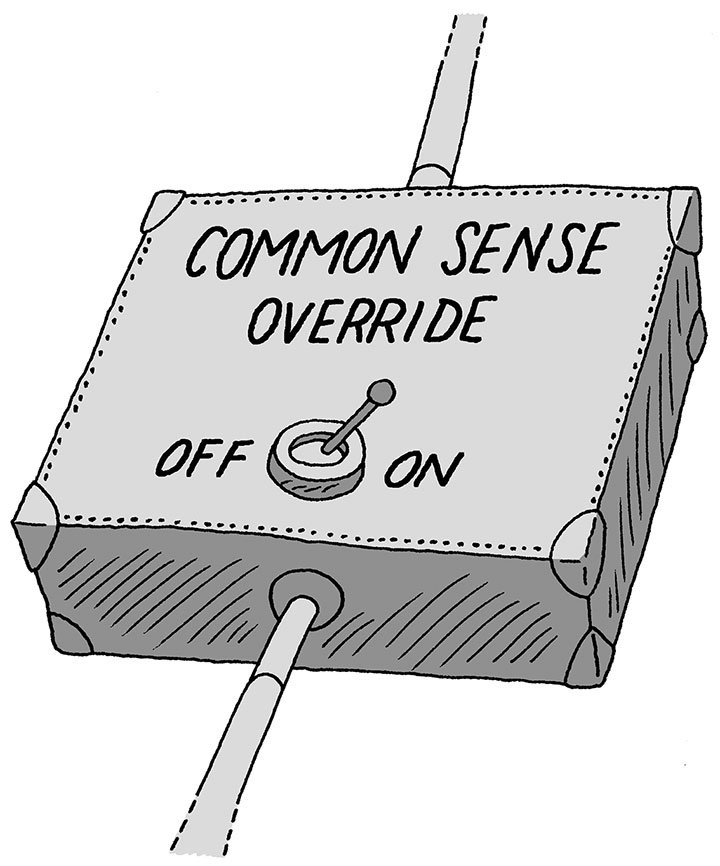In Short: Research
Biology researchers have discovered a FOUNTAIN OF YOUTH — at least for bacteria. Professor Michael Hecht and graduate student Katie Digianantonio have synthesized an artificial protein called SynSerB out of a million different proteins that never existed in nature. When implanted into E. coli bacteria lacking the amino acid serine, the new protein brought dying cells back to life. The research, which could hold implications for cell growth in humans, was published in the Proceedings of the National Academies of Science in January.
 OVERCOMING BAD HABITS may require more than willpower — it may require rewiring the brain. Researchers, including neuroscience professor Nathaniel Daw, have discovered a common mechanism in the brain that underlies a range of compulsive behaviors, including eating disorders and drug abuse. The mechanism overrides natural decision-making, resulting in behaviors that are repeated despite the harm they may cause. The finding could help in the development of diagnoses and treatments, according to an article published in the journal eLife in March. Illustration: Peter Arkle
OVERCOMING BAD HABITS may require more than willpower — it may require rewiring the brain. Researchers, including neuroscience professor Nathaniel Daw, have discovered a common mechanism in the brain that underlies a range of compulsive behaviors, including eating disorders and drug abuse. The mechanism overrides natural decision-making, resulting in behaviors that are repeated despite the harm they may cause. The finding could help in the development of diagnoses and treatments, according to an article published in the journal eLife in March. Illustration: Peter Arkle
Genes discovered in lowly ground worms may hold the key to reversing AGE-RELATED COGNITIVE DECLINES, according to new research by molecular biology professor Coleen Murphy and postdoctoral fellows Rachel Kaletsky and Vanisha Lakhina. The researchers developed techniques to break through the hard shell covering the neurons inside the tiny soil-dwelling roundworms to study how they were affected by certain genes. The research, published in Nature last November, led to discovery of a new gene that caused neurons to better repair themselves and last longer overall. Currently, the team is looking for more genes that might have similar effects, and studying how they might relate to genes associated with longevity in humans.
When it comes to the effects of CLIMATE CHANGE, not all of the world’s citizens will be impacted the same way. A new model created by economics professor Robert E. Kuenne predicts that the poor will bear the brunt of coastal flooding and agricultural droughts, potentially causing them to become even worse off than they are now. The model, which is the first to consider inequalities within countries and regions, highlights the need for more aggressive carbon pricing to curb emissions. The paper was co-authored by mechanical and aerospace engineering professor emeritus Robert Socolow along with postdoctoral researchers Francis Dennig, Mark Budolfson, and Asher Siebert; and published in the Proceedings of the National Academies of Science in December 2015.
New research by biology professor William Anderegg shows that DROUGHTS CAUSED BY THE CHANGING CLIMATE will lead to the deaths of vast numbers of the world’s trees. Studying trembling aspens in Colorado, Anderegg has found that chronic drought conditions interfere with the trees’ ability to pull water from the soil up through its trunk, leading to air bubbles in their vascular system that can lead to their death. Wide-scale forest depletion, in turn, can limit the absorption of carbon dioxide, speeding the pace of climate change if emissions are not reduced, argues Anderegg along with colleagues from the University of Utah, the University of Nevada, and other institutions in Science last July.
Ever feel like you can’t totally BE YOURSELF AT WORK? New research by psychology doctoral candidate Jillian Swencionis and psychology professor Susan Fiske finds you are not alone. In four studies of 150 to 200 participants each, they found that people consistently change their behavior in order to try and counter stereotypes or match expectations of those around them – with managers playing dumb in an effort to appear warm, and subordinates giving a cold shoulder to appear more competent. While well-intentioned, such behavior can lead to awkward encounters and misunderstandings, Swencionis and Fiske write in a paper published this past May in the Journal of Experimental Social Psychology.
What do you do when you have the WORLD’S OLDEST ICE? Go looking for even older ice. Geosciences professor John Higgins led an expedition to Antarctica last year that discovered ice that has remained frozen for over a million years, and contains within it valuable information about what Earth’s atmosphere was like at that time. This winter, Higgins and a team of 4 other researchers returned to Antarctica, braving single-digit temperatures and 30-m.p.h. windstorms to drill out a core of ice they hope will be up to 2 million years old. The ice – all 4.5 tons of it – is being shipped to a lab in Denver, where it will be dated and analyzed. It could provide information on the amount of methane and carbon dioxide in the atmosphere in prehistoric times, and what the atmosphere could look like if climate change continues.
Uber may be not only more convenient for passengers, but also more EFFICIENT FOR DRIVERS, according to a new study by economists Judd Cramer and Alan B. Kreuger. The researchers studied the “capacity utilization” – or time that cars actually had clients in the back seat – for Uber and cab drivers in Los Angeles and Seattle, and found that Uber drivers were carrying fares 40-50 percent more of the time. In a working paper published by the National Bureau of Economic Research in March, they attribute this difference to Uber drivers’ ability to set their own shifts, as well as cab companies’ limitations in picking up passengers outside their jurisdictions.











No responses yet